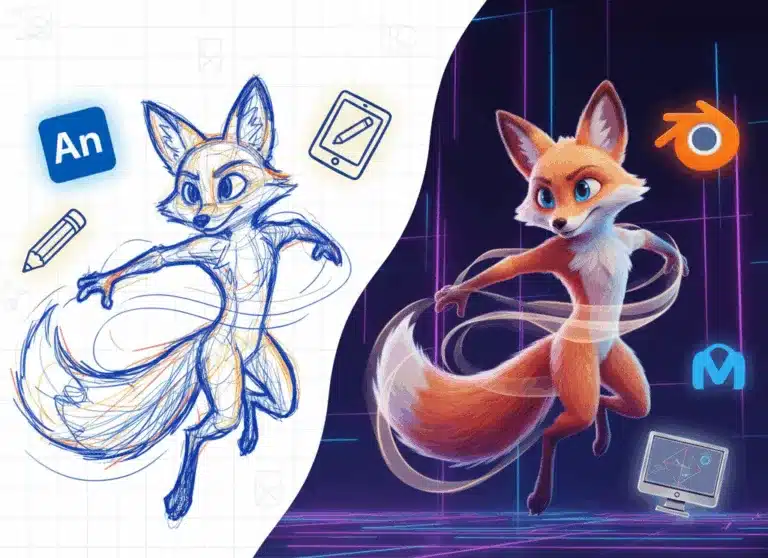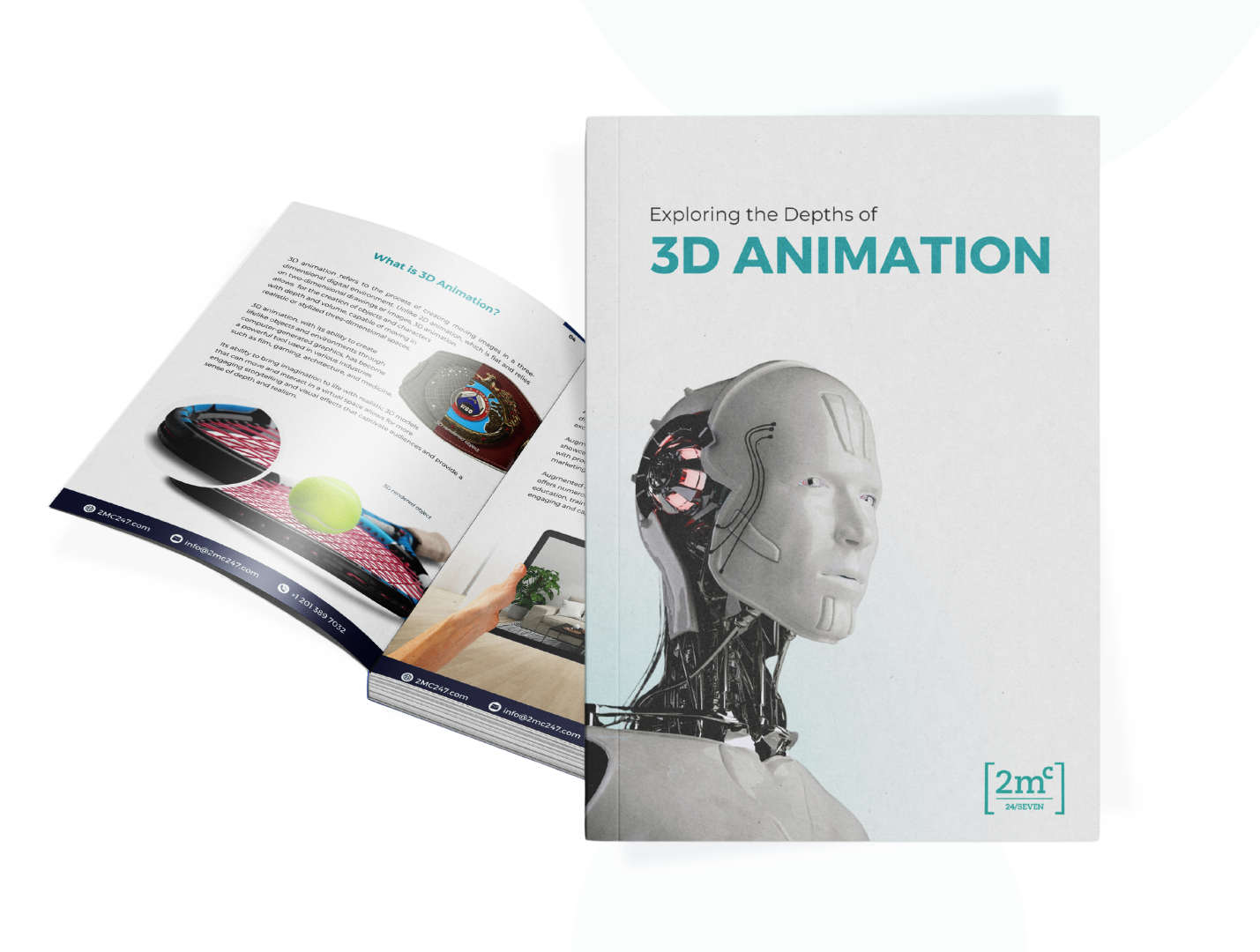Product visualization has emerged as a powerful tool for brands to unlock exponential growth and enhance their customer experiences. In today’s digital landscape, where online shopping has become increasingly prevalent, the ability to showcase products in an engaging and immersive way is crucial.
Today, we delve into the world of 3D product visualization and explore how it can revolutionize brand strategies.
What is 3D Product Visualization?
3D product visualization is a powerful tool that has been effectively utilized by numerous brands across various industries, such as Crate & Barrel, Roam Luggage, and Boston Tech, to enhance customer experience and drive conversions. This technology allows customers to visualize products in a realistic 3D format, giving them a better understanding of the product’s features and customization options.
Why 3D product visualization?
By utilizing sophisticated rendering techniques, brands can provide customers with an unparalleled level of detail and interactivity, enhancing their overall shopping experience.
The use of 3D product visualization services allows brands to create virtual replicas of their products that customers can interact with online. This technology enables customers to view products from different angles, zoom in on specific details, and even customize certain aspects such as color or materials.
Through this level of customization, brands are able to cater to individual preferences and create a more personalized experience for their customers. This not only enhances customer engagement but also increases the likelihood of conversion as customers are more likely to make a purchase when they feel connected to the product.
One example of successful implementation is seen in Crate & Barrel’s use of furniture visualization technology. Customers can now see how different fabrics and finishes will look on customizable pieces before making a purchase. This not only increases customer satisfaction but also reduces the likelihood of returns due to mismatched expectations.
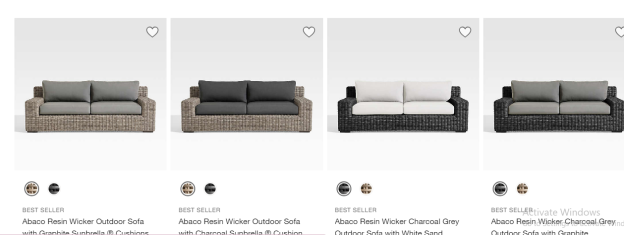
Roam Luggage is another brand that has leveraged 3D product visualization to great effect. Their online configurator allows customers to customize every aspect of their luggage, from color and size to handle type and wheel design. Being able to see these customizations in real-time helps customers make informed decisions about their purchase.
These examples demonstrate the power of 3D product visualization in enhancing the customer experience and driving conversions. By allowing customers to interact with virtual representations of products, brands are able to provide a more engaging shopping experience that boosts confidence in purchasing decisions.
In addition to enhancing customer engagement, 3D product visualization has been proven to significantly improve the overall customer experience. Studies have shown that interactive visual content captures attention better than static images or text alone. By providing customers with an immersive and interactive experience, brands can captivate their audience and leave a lasting impression.
Furthermore, the ability to visualize products in three dimensions allows customers to get a better sense of size, scale, and proportionality before making a purchase decision. This reduces uncertainty and helps customers make more informed choices.
Understanding 3D Product Visualization
Immersive and interactive experiences have become essential for brands to engage with consumers, as evidenced by a significant increase in customer satisfaction and sales conversions when utilizing 3D product visualization. By offering engaging visual experiences, brands can create a superior eCommerce experience that not only attracts potential customers but also encourages them to make purchases.
To fully understand the benefits of 3D product visualization, it is important to consider the various services it offers. These include photorealistic renderings, interactive configurators, augmented reality (AR), and virtual reality (VR).
Photorealistic renderings enable customers to view products from different angles and perspectives, creating a lifelike representation of the item. Interactive configurators allow users to customize products according to their preferences by selecting different materials, finishes, colors, or sizes.
AR technology takes this customization process further by allowing customers to virtually place products in their real-world environment using their smartphone or tablet camera. VR immerses users in a virtual environment where they can explore products as if they were physically present.

Product visualization services are particularly beneficial for product design as they provide designers with valuable insights into consumer preferences and behavior through data analytics. By analyzing how customers interact with 3D visualizations and track their choices during the configuration process, designers can gather information on popular features or trends that can guide future product development strategies.
Additionally, 3D visualization allows designers to showcase their designs more effectively before production begins. They can test different iterations of a design without the need for physical prototypes or samples, saving time and resources.
With its ability to enhance customer engagement and provide valuable insights into consumer preferences, 3D product visualization has unlocked new opportunities for brand growth across industries. As we delve deeper into exploring visualization in product design in the next section, we will discover how this technology can revolutionize the way brands approach product development and customer experiences.
Boost Sales & Engagement: the Benefit of Product Visualization for your Average Customer
One key advantage of product visualization is its ability to provide customers with a better understanding of the design and functionality of a product. Traditional 2D images or descriptions may not effectively communicate all the features and details that make a product unique.
However, with 3D visualization, brands can showcase every angle, texture, and component of their products in high fidelity. This level of detail enhances customer confidence in their purchasing decisions by allowing them to fully evaluate the product’s design and quality.
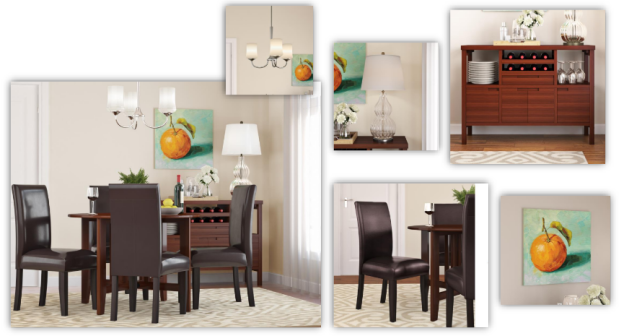
In addition to enhancing customer understanding, 3D product visualization also empowers customers to customize and personalize products through a product configurator. By offering options for color, materials, finishes, or other customizable elements within an interactive platform, brands can provide customers with a sense of ownership over their purchases.
This customization process not only increases customer satisfaction but also boosts brand loyalty as customers feel more connected to the products they have created themselves.
Product visuals play a crucial role in capturing consumers’ attention, enhancing their shopping experience, and ultimately driving brand growth. To take advantage of this, here are some things to keep in mind as you implement product visualization for your brand.
1. Understand your target audience: The first step in mastering product visualization is to have a deep understanding of your target audience. By knowing their preferences, desires, and pain points, you can tailor your visualizations to resonate with them effectively. Whether it’s showcasing different configurations or highlighting unique features, aligning your visuals with what appeals to your audience will maximize engagement and conversion rates.
2. Invest in high-quality assets: Visualizing a product requires high-quality assets such as images and 3D models. Investing in professional photography or creating accurate 3D models will ensure that your product looks its best in visual representations. These assets serve as the foundation for creating realistic and immersive experiences for customers, increasing trust and confidence in your brand.
3. Choose a reliable visualization vendor: Choosing the right visualization vendor is critical for achieving exceptional results. Look for vendors who offer advanced technology solutions that enable interactive 3D visualizations across various platforms such as web browsers and mobile devices. Consider factors like ease of integration with existing systems, customizable options, scalability, and support services when making a decision.
Now that we understand why 3D product visualization matters in elevating brand presentations and providing an immersive experience for customers, let’s explore some techniques and strategies for visualizing a good product.
How to Visualize a Good Product: Techniques and Strategies
To effectively visualize a product, brands can employ various techniques and strategies that enhance customer understanding and engagement.
One technique is the use of high-quality product rendering. By creating photorealistic images or videos of their products, brands can provide customers with a realistic representation of what the product will look like in real life. This allows customers to get a better sense of the design, features, and overall aesthetic appeal of the product before making a purchase.
Additionally, using visualization tools such as 3D configurators or virtual reality experiences can further enhance the customer’s ability to interact with and explore different aspects of the product.
In addition to high-quality rendering, another technique for effective product visualization is customization options. Giving customers the ability to customize certain aspects of a product not only increases their engagement but also creates a sense of ownership and personalization.
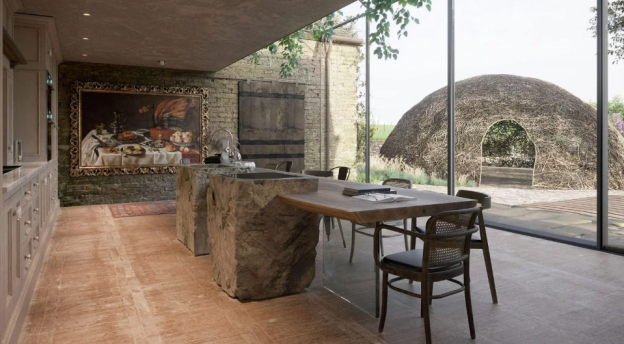
To evoke an emotional response in the audience, brands can also leverage storytelling techniques within their visualizations. By showcasing how the product fits seamlessly into a customer’s lifestyle or solving specific pain points they may have, brands can create a connection between the customer and the product on an emotional level. For example, Lovesac uses its 3D product visualizer to demonstrate different configurations of its products, enabling customers to envision how these customizable pieces will fit into their homes and meet their unique needs.
The power of 3D product visualization lies in its ability to unleash visual excellence by combining all these techniques mentioned above. By utilizing high-quality rendering, customization options, and storytelling techniques within visualizations, brands can create an immersive experience for customers that goes beyond traditional two-dimensional images or descriptions. In doing so, they are able to capture attention, engage customers, and ultimately drive brand growth.
Industries Using Product Visualization.
One industry that has greatly benefited from 3D product visualization is the furniture industry.

Visualizing furniture accessories such as sofas, chairs, and tables in 3D allows customers to see how these items will fit into their home or office space before making a purchase. This not only enhances the customer’s shopping experience but also reduces the risk of returns or dissatisfaction due to mismatched styles or sizes. Furniture brands that have embraced 3D visualization have seen significant improvements in customer engagement and conversion rates.
Moreover, various industries beyond furniture are tapping into the power of 3D product visualization to unlock new opportunities for growth. From automotive companies showcasing customizable toy cars to fashion brands allowing customers to visualize tailored suits, the possibilities are endless.
By offering interactive visualizations, brands can provide an immersive experience that stimulates customer interest and drives sales. The use of 3D product visualization has become increasingly important in today’s digital age where online shopping has become the norm.
Choosing the Best Software for 3D Product Visualization
When it comes to choosing the best software for 3D product visualization, there are several key points to consider.
First, using NURBs data for rendering allows for smooth and accurate representations of complex shapes and surfaces. Second, using polygonal data for rendering provides a flexible approach that can handle a wide range of geometric details. Finally, software options such as Blender, Lumion, and Foyr Neo offer powerful tools and features that can enhance the visual quality and realism of product renderings.
Let’s go over it in detail.
NURBs data
Utilizing NURBs data for rendering enhances the accuracy and realism of 3D product visualizations, allowing brands to showcase their customizable products in a more engaging and immersive manner.
NURBs, which stands for Non-Uniform Rational B-Splines, is a mathematical representation commonly used in computer graphics and CAD software to create smooth curves and surfaces. By using NURBs data, brands can create highly detailed and precise 3D models that accurately represent the shape, structure, and texture of their products.
This level of accuracy enables customers to visualize the product as it would appear in real life, helping them make informed purchasing decisions. To better understand the benefits of utilizing NURBs data for rendering in 3D product visualization, consider the following table:
|
Benefits of Utilizing NURBs Data for Rendering |
|
1. Enhanced Accuracy: NURBs allow for precise control over surface curvature and geometry, resulting in more realistic renderings. |
|
2. Improved Realism: The use of NURBs data creates smoother surfaces with fewer jagged edges or polygonal artifacts, resulting in a more visually appealing representation of the product. |
|
3. Greater Customization: With accurate representations of their products, brands can offer customers a wide range of customization options and configurations to choose from. |
|
4. Increased Engagement: The level of detail provided by NURBs-based renderings immerses customers in a virtual environment where they can interact with the product before making a purchase decision. |
|
5. Augmented Reality Integration: By leveraging NURBs data, brands can seamlessly integrate their 3D visualizations into augmented reality experiences for an even more interactive shopping experience. |
By harnessing the power of NURBs-based rendering techniques, brands can unlock the full potential of 3D product visualization by creating photorealistic renderings that captivate customers’ attention and drive sales conversions.
Using Polygonal Data for Rendering
One approach to further enhance the level of detail and visual appeal in 3D product representations is by utilizing polygonal data for rendering, which offers distinct advantages over other techniques commonly used in computer graphics.
Polygonal data refers to the use of polygons, typically triangles, to create the surfaces and shapes of objects in a 3D environment. This method allows for highly detailed and realistic renderings, as each polygon can be individually shaded and textured, resulting in a more accurate representation of the product.
Additionally, using polygonal data allows for efficient storage and processing of 3D models, making it easier to work with complex designs without sacrificing quality.
The advantages of using polygonal data for rendering are particularly evident in automotive product visualization. Cars have intricate details such as curves, reflections, and textures that need to be accurately represented in order to provide an immersive experience for customers. By utilizing polygonal data, automotive brands can create photorealistic renderings that showcase every aspect of their products with stunning accuracy. This not only helps customers visualize the final product before purchasing but also allows manufacturers to identify any design flaws or improvements early on.

Blender

Blender, a widely used software among professionals, empowers brands to create highly detailed and photorealistic 3D visualizations by leveraging the capabilities of polygonal data. With its advanced rendering engine and extensive toolset, Blender allows brands to showcase their products in a visually stunning manner, enhancing the overall shopping experience for customers.
By utilizing polygonal data, Blender enables precise modeling of complex shapes and intricate details, resulting in virtual representations that are almost indistinguishable from real-life objects. In addition to its ability to create realistic visuals, Blender offers a range of features that make it one of the best 3D visualization software available.
Its flexible interface allows designers to customize their workflow according to their specific needs and preferences. Moreover, Blender supports various file formats, making it compatible with different platforms and ensuring seamless integration into existing systems. This versatility makes it an ideal tool for brands looking to incorporate AR product configuration into their marketing strategies.
Lumion

Lumion, a cutting-edge software, opens the door to a realm of captivating and immersive product visualizations that transport customers into a world where the boundaries between virtual and real blur.
With its advanced rendering capabilities and user-friendly interface, Lumion empowers brands to create highly realistic 3D visualizations that showcase their products in stunning detail.
By harnessing the power of Lumion, brands can leverage social media platforms as powerful marketing tools, reaching a wider audience and generating increased brand engagement.
One of the key strengths of Lumion is its ability to produce visually stunning renders that are indistinguishable from reality. This level of realism allows customers to fully immerse themselves in virtual environments where they can interact with products in ways not possible through traditional means.
Foyr Neo
Foyr Neo, another innovative visualization tool, offers brands a powerful solution for creating immersive and captivating product visualizations that captivate their target audience. This cutting-edge technology allows brands to showcase their products in a highly realistic and interactive manner, providing customers with a truly engaging shopping experience.
Foyr Neo’s advanced features enable users to visualize products from multiple angles, customize colors and materials, and even simulate real-world environments to see how the product would look in different settings.
To further illustrate the capabilities of Foyr Neo, consider the following table:
|
Features |
Benefits |
|
Realistic 3D Rendering |
Provides customers with an accurate representation of the product, increasing trust and reducing returns. |
|
Interactive Customization |
Allows customers to personalize products according to their preferences, enhancing the sense of ownership and connection. |
|
Virtual Environment Simulation |
Enables customers to visualize how the product would fit into their space or complement other items, facilitating informed purchase decisions. |
With Foyr Neo’s state-of-the-art tools at their disposal, brands can leverage the power of visual storytelling to create compelling narratives around their products. By immersing customers in virtual experiences that closely mimic reality while offering customization options, Foyr Neo empowers brands to unleash exponential growth by delivering enhanced customer engagement and satisfaction.
Keyshot

By harnessing the power of Keyshot, brands can create compelling visuals that evoke emotions in their audience and leave a lasting impression.
● Immersive Experience: Keyshot enables brands to create immersive experiences by showcasing their products from different angles and perspectives. Through interactive 3D models, customers can explore every aspect of the product, zoom in on details, rotate it in any direction, and even interact with certain elements. This level of interactivity creates a sense of engagement and involvement that traditional 2D images cannot replicate.
● Realistic Textures: One key advantage of Keyshot is its ability to accurately depict materials and textures. Whether it’s the smoothness of leather or the roughness of wood grain, Keyshot can simulate these textures with remarkable precision. This allows customers to visualize how the product would look and feel in real life, enhancing their confidence in making a purchase decision.
● Time Savings: Creating photorealistic renderings manually can be time-consuming and resource-intensive. However, Keyshot streamlines this process by providing pre-built materials libraries, customizable lighting setups, and drag-and-drop functionality for easy model placement. Brands can save valuable time by leveraging these features to quickly generate high-quality visuals for their products.
Cedreo

With Cedreo’s advanced features and user-friendly interface, brands can easily design and visualize their products in a realistic manner. The software provides a wide range of customizable options, allowing brands to showcase their products from every angle and in various configurations. This level of detail helps customers make informed purchasing decisions by providing them with a comprehensive understanding of the product’s appearance and functionality.
One key advantage of Cedreo is its ability to streamline the design process. Brands can quickly create 3D models using pre-built templates or start from scratch using an intuitive drag-and-drop interface. The software also integrates seamlessly with other design tools such as CAD software, making it easier for designers to import their existing designs into Cedreo. Additionally, Cedreo offers collaboration features that allow teams to work together on projects, ensuring that everyone is on the same page throughout the design process.
Revit

Revit, a widely recognized software in the design industry, offers a comprehensive set of tools and features that can significantly enhance the product visualization process for brands, enabling them to create highly detailed and realistic 3D renderings.
With Revit’s powerful capabilities, brands can bring their products to life in a virtual environment, allowing customers to visualize the final outcome before making a purchase. The software’s intuitive interface makes it easy for designers and marketers to create interactive and engaging visualizations that showcase every detail of the product.
Here are some benefits of using Revit:
Advanced modeling tools: One of the key advantages of using Revit for product visualization is its extensive range of modeling tools. These tools allow designers to create intricate 3D models with precision and accuracy. Whether it’s furniture, buildings, or consumer goods, Revit offers the flexibility to accurately represent any product in a digital format.
Realistic material representation: Another standout feature of Revit is its ability to simulate real-world materials. Brands can apply different textures and finishes to their products within the software, giving customers an accurate representation of how the final product will look and feel. This level of realism enhances customer confidence and reduces uncertainty when making purchasing decisions.
Seamless integration with other design software: In addition to its robust set of features, Revit also integrates seamlessly with other popular design software such as AutoCAD and SketchUp. This interoperability allows brands to leverage existing assets and streamline their workflow by easily importing designs from other platforms into Revit for further refinement.
With its wide range of capabilities and user-friendly interface, Revit empowers brands to create photorealistic 3D renderings that captivate their audience. By leveraging this technology effectively, brands can provide immersive experiences that drive engagement and ultimately lead to increased sales.
Creating Photorealistic 3D Renderings for Product Visualizations: Step-by-Step
Gather Product Data
The first step in creating photorealistic 3D renderings is to gather all the necessary product information, including detailed measurements, materials used, and any customizable features. This information serves as the foundation for accurately recreating the product in a virtual environment.
Create a Digital Model
The next step is to create a digital model of the product using specialized software. This involves digitally sculpting each component of the product and applying realistic textures and materials to achieve lifelike results. Lighting plays a crucial role in creating photorealistic renderings, so adjusting lighting settings within the virtual environment is essential to ensure accurate shadows and reflections.
Customize to Perfection
Once the digital model is complete, it’s time to add interactivity and customization options. This includes allowing customers to rotate and zoom in on the product, change colors or finishes, and even add or remove certain features or accessories. Interactive elements not only engage customers but also provide them with a sense of ownership over their purchasing decisions.
By following this step-by-step process, your brand can effectively create photorealistic 3D renderings that captivate customers and enhance their online shopping experience. These immersive visuals allow customers to interact with products on a deeper level before making a purchase decision. In turn, this leads to increased conversions and ultimately drives exponential brand growth through improved customer satisfaction.
Exploring 3D Product Visualization Courses: Enhancing Your Skillset
Discovering the vast array of educational opportunities available for mastering 3D product visualization can empower individuals to unlock their creative potential and develop valuable skills in this cutting-edge technology. As the demand for 3D product visualization continues to grow across various industries, there is a need for skilled professionals who can effectively utilize this tool to enhance brand growth and customer experience.
By enrolling in specialized courses or training programs, individuals can learn the technical aspects of 3D rendering, gain proficiency in software applications used in the field, and understand the principles of design and visual aesthetics. These courses often provide hands-on experience with real-world projects, allowing students to apply their newly acquired knowledge and develop a portfolio that showcases their expertise.
The benefits of acquiring skills in 3D product visualization are significant. Not only does it open up new career opportunities in fields such as advertising, e-commerce, interior design, and architecture, but it also enables individuals to stay at the forefront of technological advancements.
With more brands recognizing the power of 3D product visualization in boosting conversions and improving customer engagement, professionals with these skills are highly sought after. Moreover, by combining creativity with technical proficiency, individuals can create visually stunning virtual experiences that captivate audiences and leave a lasting impression.
Immersive Digital Showrooms: Elevating Customer Experience with 3D Product Visualization
Immersive digital showrooms revolutionize the customer experience by leveraging 3D product visualization technology to create interactive and personalized shopping environments. These virtual spaces allow customers to explore products in a more engaging and realistic way, providing them with a sense of being physically present in a showroom.
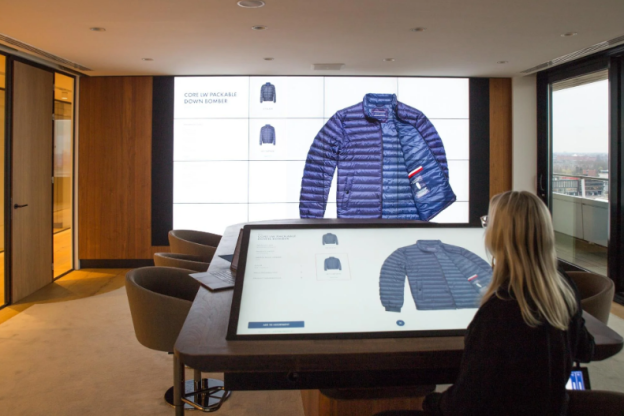
By incorporating 3D product visualizations, brands can showcase their products from every angle, allowing customers to zoom in, rotate, and interact with the items virtually. This level of interactivity enhances customer engagement and helps them make informed purchasing decisions.
To create an immersive digital showroom using 3D product visualization technology, brands can consider the following:
1. Interactive Product Displays: Brands can use 3D visualizations to display their products in a dynamic and interactive manner. Customers can manipulate the objects, change colors or materials, and even see how different components fit together. This level of customization empowers customers to visualize exactly what they are buying before making a purchase.
2. Virtual Try-Ons: With 3D product visualizations, brands can offer virtual try-on experiences for products like clothing or accessories. Customers can upload an image of themselves or use an avatar to see how different items would look on them. This feature not only improves the online shopping experience but also reduces returns due to inaccurate sizing or style preferences.
3. Realistic Environments: Immersive digital showrooms can transport customers into lifelike settings where they can envision how products would fit into their own spaces. For furniture retailers, for example, customers could place virtual furniture pieces in their homes or offices through augmented reality (AR) technology. This allows them to see if the item matches their existing decor or if it meets their functional requirements.
4. Social Sharing Integration: To enhance brand exposure and reach new audiences, immersive digital showrooms should integrate social sharing capabilities. Customers who have positive experiences exploring these virtual environments may be more likely to share their findings with friends and followers on social media platforms. This word-of-mouth promotion can significantly increase brand awareness and attract new customers.
Immersive digital showrooms have the potential to transform the way customers engage with products online. By leveraging 3D product visualization technology, brands can create interactive and personalized shopping experiences that enhance customer satisfaction and boost sales.
Transforming Retail: Enhancing Product Presentation with AR, VR, and 3D
The previous subtopic explored the concept of immersive digital showrooms and how they can elevate the customer experience through the use of 3D product visualization. This technology enables brands to showcase their products in a virtual environment, allowing customers to interact with them and visualize how they would fit into their own lives.
However, there is still untapped potential in this field that can further transform the retail industry. The current subtopic delves into the transformative power of augmented reality (AR), virtual reality (VR), and 3D technology in enhancing product presentation. These cutting-edge technologies have revolutionized the way brands engage with consumers by creating immersive and interactive experiences.
AR allows customers to superimpose virtual objects onto their real-world surroundings, giving them a realistic preview of how a product would look and feel in their own space. VR takes it a step further by transporting users into completely virtual environments where they can explore products as if they were physically present.

By incorporating AR, VR, and 3D technology into their retail strategies, brands can provide a truly unique and captivating shopping experience for their customers. Not only does this enable consumers to make more informed purchasing decisions, but it also fosters an emotional connection to the brand and its products. Research has shown that these types of immersive experiences result in higher levels of engagement, increased conversion rates, and improved customer satisfaction.
Creating 3D Models for E-Commerce: Driving Engagement and Conversion
As retailers embrace the capabilities of 3D modeling for e-commerce, they unlock a world of possibilities in driving customer engagement and conversion through visually immersive experiences that transcend traditional product representations.
Creating 3D models for e-commerce allows customers to interact with products in a way that was previously impossible. By providing a realistic and interactive representation of the product, retailers can offer a more engaging shopping experience that captures the attention and interest of consumers.
One of the key benefits of creating 3D models for e-commerce is its ability to drive conversion rates. Traditional product images often fail to fully capture the features and details of a product, leaving customers uncertain about their purchase decision. However, with 3D models, customers can view products from different angles, zoom in on specific details, and even interact with them virtually. This level of interactivity helps customers make informed decisions by providing them with a comprehensive understanding of the product’s design and functionality.
Moreover, creating 3D models for e-commerce also enhances customer engagement. By allowing customers to explore products in detail, retailers create an immersive experience that keeps shoppers engaged for longer periods.
This increased engagement not only increases the likelihood of conversion but also creates positive brand associations as customers perceive the retailer as innovative and forward-thinking. Additionally, interactive 3D models encourage social sharing as customers are more likely to share their unique experiences with friends and family, further amplifying brand exposure.
Ultimately, this technology enhances customer engagement and drives conversions by offering an innovative shopping experience that sets brands apart from competitors in today’s increasingly digital marketplace.
Conclusion
By bringing designs to life with 3D product visualization and providing immersive digital showrooms, brands can elevate the customer experience and enhance product presentation. The use of AR, VR, and 3D technology further transforms retail by allowing customers to visualize products in their own space.
The benefits of 3D visualization extend beyond enhanced design and sales for furniture; it also drives engagement and conversion in e-commerce. By creating realistic 3D models that showcase different configurations and customization options, brands can effectively capture the attention and interest of consumers. This data-driven approach to product visualization not only amplifies design but also boosts conversions.
Overall, in these times it is important to incorporate 3D product visualization into your brand’s eCommerce strategies. With its ability to unleash exponential brand growth through enhanced customer experiences and increased conversions, businesses cannot afford to overlook this powerful tool.
As we navigate the ever-evolving digital landscape, embracing emerging trends like Shopify augmented reality and virtual products in the Metaverse will be crucial for staying ahead in a competitive market.
Frequently Asked Questions
How can 3D product visualization boost conversions and improve customer experience?
3D product visualization enhances conversions and customer experience by providing interactive and customizable experiences. It allows customers to visualize products in detail, increasing their confidence in purchasing decisions. This technology has been successfully utilized by various brands across industries.
What industries can benefit from 3D product visualization?
3D product visualization has the potential to benefit a wide range of industries, including furniture, luggage, fashion, lighting, and toys. By providing customers with customizable options and immersive experiences, businesses can enhance conversions and improve customer satisfaction.
What are some techniques and strategies for visualizing a good product in 3D?
To visualize a good product in 3D, brands can employ techniques such as customizable options, interactive configurators, and photorealistic renderings. These strategies enhance customer experience, boost conversions, and allow for personalization, ultimately driving brand growth and innovation.



